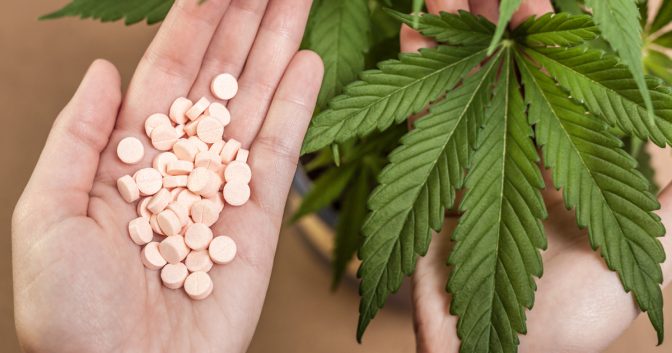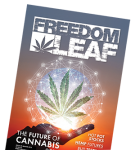At High Sobriety, Addicts Kick Opioids and Alcohol with Cannabis

With medical and, increasingly, recreational marijuana available in more than 30 states, the healing herb’s qualities have now spread to the field of addiction recovery, helping opioid users ease their way through the debilitating effects—nausea, stomach cramps, muscle spasms, irritability, insomnia and anxiety—of withdrawal.
High Sobriety, a 24-bed in-patient facility in Culver City, Calif., provides cannabis as both a reward and way to kick the physical cravings that come from opioids and alcohol and charges upwards of $40,000 for a month-long stay. Founded last year by three former colleagues at Malibu, Calif.’s famous Promises rehab facility—the recently departed Joe Schrank, Cassidy Cousins and Michael Welch—High Sobriety is now being run by Dr. Sherry Yafai, a trained emergency medicine physician who practiced at the Releaf Institute before starting her own practice.
“I’d been working in the emergency department for over a decade in Los Angeles and had grown frustrated watching kids overdose time and time again,” Dr. Yafai tells Freedom Leaf. “There had to be a better way to help patients achieve and maintain their sobriety. Last year, I opened my own cannabis-based office for pain management last year. I found that I could reduce their narcotic load dramatically while at the same time improve their pain management with cannabis alone.

High Sobriety’s Dr. Sherry Yafai
“It was around that time that I spoke with Joe Schrank from High Sobriety,” she continues. “It was speaking with Joe that changed my perspective on using cannabis as a part of treatment in addiction. I took this post with the intention of modifying the patients’ treatment plan and creating more of a bridge therapy for adults who’ve never known adulthood without the haze of intoxication. I believe that we can continue to do this better.”
Despite his parting of the ways with High Sobriety, Schrank remains one of the leading proselytizers for alternatives to the traditional abstinence-based rehabilitation methods. The 48-year-old Orange County native, a Jesuit-trained, self-described “cultural” Catholic, ironically, has never smoked a joint in his life.
AMANDA REIMAN: “The paradigm of abstinence has placed a stranglehold on the entire addiction recovery industry.”
A University of Southern California alumnus who holds a master’s degree in social work from the University of Illinois and is 20 years sober himself, Schrank initially subscribed to Alcoholic Anonymous’ long-held tenet of “total abstinence.” But he changed his mind after the comedian Greg Giraldo, a good friend and patient, died in 2010 at the age of 44 from an overdose of prescription medication.
“I realized then we can’t just pontificate on a single road to recovery,” says Schrank. “Greg did everything we told him to do, attend meetings, get a sponsor. He’d be fine for periods of time, then reach a breaking point. Towards the end, I just started telling him to smoke pot.”
That, in a nutshell, is the premise behind High Sobriety, a philosophy dubbed “harm reduction” in which the physical debilities of addiction—and the danger of accidental death by overdose—are mitigated by the regular use of marijuana or the distribution of clean needles. The “harm reduction” approach to treating addicts has been adopted in Portugal and Switzerland, where a prescription heroin program has substantially reduced accidental ODs. Predictably, it has come under fire from AA partisans.
“I knew there’d be a ton of pushback,” says Amanda Reiman, who has served as a consultant to High Sobriety (and also writes for Freedom Leaf. “The paradigm of abstinence has placed a stranglehold on the entire addiction recovery industry.”

Joe Schrank
Schrank found himself caught between the principles of AA and his own common-sense crusade to make marijuana easily available to those it could help. Citing figures of a more than 95% relapse rate among participants in traditional 12-step recovery programs, he asks, “If something is helpful, why put up barriers to its use? If it’s legal, then you’re not a criminal.
“I don’t know if it’s individually right for everybody, but it should at least remain an option in consultation with a doctor,” Shrank adds. “Even if the story starts at harm reduction, we don’t know how it ends. As recovery professionals, we’re supposed to be non-judgmental and compassionate, to believe in progress, not perfection. In my view, giving up heroin for cannabis is a progression. As a Jesuit, I also feel the commitment to social justice. Possessing or using cannabis is not a crime for which a human should be put in a cage. It’s a disgrace to enlightened society.”
DR. SHERRY YAFAI: “There had to be a better way to help patients achieve and maintain their sobriety.»
Under Reiman’s guidance, Brandie Wilson, a 43-year-old veteran grower in Eureka, Calif., who turned to homemade edibles to treat her addiction to opioid painkillers, formed the Humboldt Area Center for Harm Reduction to provide “proper substance use education” and safe consumption sites, enabling users to make healthier decisions.
Eddie Duckworth, a 39-year old flower vendor for Hife Farms in Northern California’s Yolo County, was shot in the knee making a delivery to a San Jose dispensary in 2016 and subsequently became addicted to his opioid painkiller. A lifelong pot user, he favored a “well-grown and tended indica” to help ameliorate the effects of going cold turkey. “If I didn’t have cannabis,” Duckworth notes, “I don’t know how I would’ve ever gotten off opiates. The physical needs are just so strong.”

Both Wilson and Duckworth were turned off to not just AA’s abstinence policy, but much of the dogma and the stigma it places on those who don’t maintain a strict regimen of sobriety.
Don Fertman, a top marketing executive at Subway and fervent AA supporter who just celebrated the 35th anniversary of “his last drink” (he refuses to call it “sobriety”) in June, is the founder of Recovery Branches, which offers information and alternatives to AA such as Phoenix Multisport, which involves “sober” athletic activities such as rock-climbing and bicycling.
“Sobriety is a nebulous term,” he insists. “It’s more a state of mind, because you don’t need a drink or drug in your system to exhibit non-sober behavior. “
JOE SCHRANK: “If there’s room for 14,000 abstinence-based treatment centers, there has to be room for ‘medication without shame’ facilities.»
And while Fertman says a “drug-and-alcohol-free” life is the ultimate goal, he notes the copious amounts of caffeine and nicotine consumed during a typical AA meeting and acknowledges that “using cannabis in place of something that will kill you is just common sense.”
The day Schrank originally spoke to Freedom Leaf, while he was still with High Sobriety back in March, he’d just returned from a funeral for a young man on his way to entering the facility. But a lethal combination of benzodiazepines, alcohol and cocaine ingested during one final “farewell” party took his life.

High Sobriety’s common area
“I’d just told him, ‘Come here and get baked for a while, and see what happens,’” Schrank sighs. “One of my messages is, don’t wait until you’re in an acute crisis. You never know for sure about the warning signs. Anybody can be a Monday morning quarterback. You can have a physical exam, but sometimes all it takes is for someone to ask, ‘How are you feeling?’ to measure their emotional health. I take no pleasure in being right, but life beats death any day.”
Schrank remains very active weaning addicts off life-threatening drugs by using marijuana. “This type of conflict is pretty common in the rehab world when you’re dealing with ex-addicts,” he says about his split with High Sobriety. “If there’s room for 14,000 abstinence-based treatment centers, there has to be room for ‘medication without shame’ facilities. I’m not giving up by any means. My goal is to expand the definition of recovery, to make the tent larger, to invite people who previously felt shamed or unwelcome. We’re not going to win this opium war any other way.”
Related Articles
Five Cannabis Innovations in Northern California
On Bans and Taxes: California Hits a Few Speed Bumps
Arcview Predicts a $7.7 Million California Cannabis Market by 2021
In Defense of Weedmaps’ Fight With California
If you enjoyed this Freedom Leaf article, subscribe to the magazine today!

